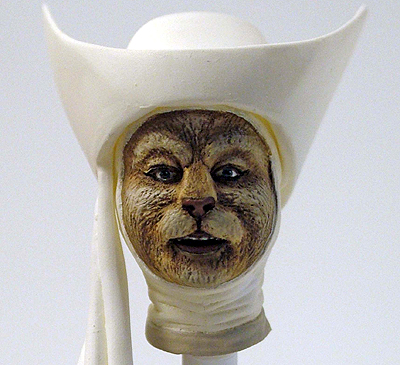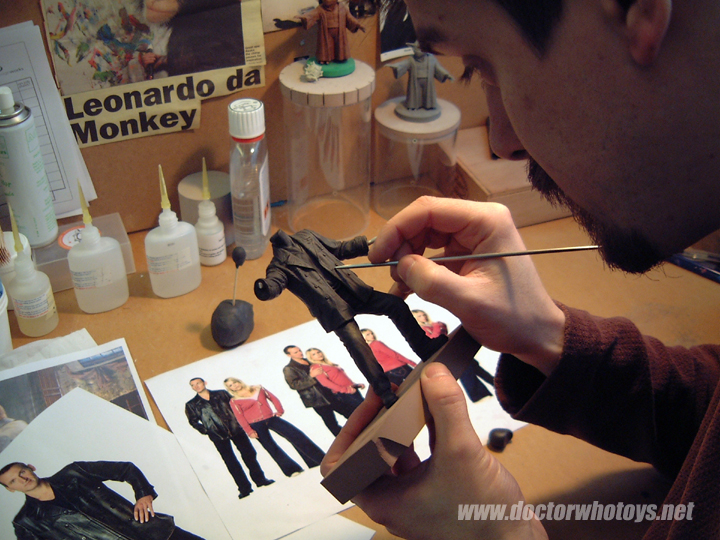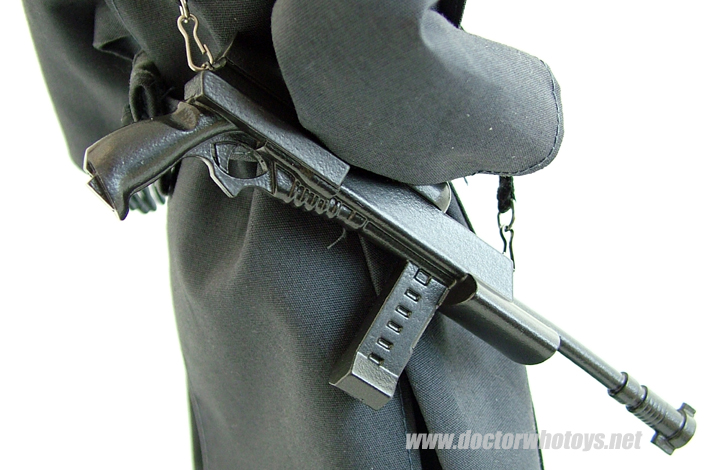doctorwhotoys.net







Exclusive Interview with Edmund Barnett-Ward, Director of Sculpting at Designworks Windsor, the company that sculpts Character Options
Doctor Who Action Figures
This interview took place in Windsor, England on the 27th February 2008 and is Strictly
Copyright © doctorwhotoys.net, All Rights Reserved; may not be reproduced in full or part.
All images are for the exclusive use of doctorwhotoys.net approved by and copyright © Designworks Windsor, Character Group plc and the BBC

Part 1 Behind the Scenes at Designworks
Part 2 All About Ed
Part 3 A Little History
Part 4 The Making of Doctor Who Action Figures
Part 5 Traditional Sculpting
Part 6 Sculpting Materials
Part 7 Approval
Part 8 Digital Sculpting
Part 9 The Sculptors
Part 10 The Story So Far
Welcome to Part 6 of a multi-part 10,000 word series describing in detail the making of Doctor Who Action Figures and including 63 exclusive new images of the figures in various stages of production.
"All figures are sculpted out of two materials. The heads are sculpted out of a thermo-polymer clay. Thats a fancy word for a plasticine-like substance which you bake in the oven until hard. So that doesn't have two parts - its a single part clay. For as long as it remains at room temperature it will be soft and pliable and easy to use. There are plenty of commercially available ones that kids will be familiar with Fimo is one Sculpey is another.
Each of the sculptors have their own preferred mixture of clay. I have a number of different clays that I get in to the workshop that people tend to mix to create their own formula, because people like different things from their clays. The 'clays' are thermo polymer clays; plastics for sculptors that you can work like clay. We use those for the heads, the reason being that when you get them down to being very thin sections, for example for coats and cloaks and thin accessories, they are not structurally sound and not friendly to work with."

Novice Hame Approval Deco - All images exclusively approved for use only on doctorwhotoys.net by Designworks, Character Options and the BBC.
"So, for instance, if I made say Doctor Constantine's coat out of a thermo polymer clay it wouldn't take a lot of handling before breaking. But the epoxy has the advantage of being able to carve it, machine it, drill into it, chop it with saws and it won't splinter or crack or crumble which is what thermo polymers tend to do. But where they do have a distinct advantage is in the ability to take a likeness because you can get a lot more detail into them in the time available but there's always a clock ticking when you use an epoxy as the material starts soft and then goes hard. The thermo polymer clays on the other hand stay soft at room temperature until baked in an oven at 130 degrees Celsius for fifteen minutes per cubic centimetre of item. We also bake the epoxy because it goes off quicker if you bake it."
"Your normal working time with an epoxy is probably thirty to forty five minutes useable time with it remaining soft before it goes too hard. But if you've done your sculpt in fifteen minutes you don't want to be waiting for it to go hard so if you put it an oven at say 100 degrees it will go off in about five minutes. So as you can see from the Doctor Constantine sculpt, that's the level of detail we can get from a thermo polymer clay. And the detail is staggering. That particular sculptor, his mixture of thermo polymer clay is Sculpey firm mixed with a very small amount of bright yellow Fimo which gives it that kind of grey colour which really helps the sculptor to see the detail that he's working on."

Novice Hame 12 Inch Original Sculpt - All images exclusively approved for use only on doctorwhotoys.net by Designworks, Character Options and the BBC.
"A head sculpt, a really good quality lifelike sculpt will probably take between three and a half and four and a half days. Most figures will take between ten and fourteen days. So of that time, three and a half to four and a half days is the head and the rest is the body."
The head sculpt is done in one go with the same piece of material which is formed into the head shape and stuck on the end of a brass pin ready to be worked on. Most of the sculptors do have magnifying lamps on their desks, though most of them would only use them for painting very small details, not for sculpting because its like being one step removed and not the same as actually having it directly in your hand."

Andrew Teal Sculpting the 9th Doctor - All images exclusively approved for use only on doctorwhotoys.net by Designworks, Character Options and the BBC.
When you are sculpting the thermo polymer, not carving or machining joints, but actually sculpting there's a wealth of sculpting tools that people use. Andrew Teal's favourite sculpting tool of choice is a small screwdriver of the sort that you would use on a watch or a pair of glasses - a miniature screwdriver. So, in other words, a tiny flat chisel shape. I use a spike, a number 13 Tiranti spike which I have had for 15 years. It's from a sculpting supply shop in central London, Alec Tiranti, who make their own tools. One of the steel tools they do is a number 13 spike. Its got a slightly fat round end on one side and a very pointed end on the other with a curved underside. Thats what I use; other people use pins, needles, a whole variety.
People make their own tools, people get lengths of brass material and shape them to the shapes they prefer to use, so there are no hard and fast rules. Where you see figures that have particularly impressive textures, say material textures, you will often find that somebody has created a special tool to do that. Things like the Doctor's scarf for example on the Tom Baker figure."
"The head sculpt can be simply left on the desk overnight, it doesn't need any looking after. Its only when you bake it that it goes off. But before any of the sculptors bake off their sculpts they will bring them to me first for my approval. So I'll look at it and say things like, 'okay I think you could possibly make the mouth slightly wider' or whatever. We'll go through in detail and we'll take measurements off the reference, and we'll really look at things and decide that they are as good as they could possibly be before baking it off.
With the rest of the figure as a whole, I tend not to look at the individual details unless, while I'm going past someone's desk, something jumps out at me, until its pretty much at a stage of completion. This is because it's not fair to judge one part of the sculpt in isolation; you have to look at it as a whole. The sculptors work is in progress until they say it is ready to be looked at. I always assume that they will get it right, not that they are going to get it wrong. They always show me the likeness for approval before hardening it off, but with the rest of the figure they will work on that till the end, and then we'll look at it."

Novice Hame 12 Inch Approval Deco Gun Accessory Detail - All images exclusively approved for use only on doctorwhotoys.net by Designworks, Character Options and the BBC.
"As far as accessories goes, they are sculpted by the same sculptor as they are working on the figure, as was the case with Doctor Constantine's cane for example. It was the same with the sonic screwdriver, Preacher Gun, Jack's Hat etc. Increasingly now with weapon accessories, to get a nice crisp hard look to it I will do those on computer. I will CAD them up and have them machined out or rapid prototyped. Thats another area; this process assumes a traditional sculpt but we also do digital sculpting as well."
Thanks Ed
Now Read Part 7: Approvals
Don't miss Part 7 in which Ed talks exclusively to doctorwhotoys.net about the process of getting the Doctor Who figures approved with the BBC. Part 7 includes an image of the figures as never seen before.
Part 1 Behind the Scenes at Designworks
Part 2 All About Ed
Part 3 A Little History
Part 4 The Making of Doctor Who Action Figures
Part 5 Traditional Sculpting
Part 6 Sculpting Materials
Part 7 Approval
Part 8 Digital Sculpting
Part 9 The Sculptors
Part 10 The Story So Far
This interview is Strictly Copyright © doctorwhotoys.net, All Rights Reserved; may not be reproduced in full or part. All images are for the exclusive use of doctorwhotoys.net approved by and copyright © Designworks Windsor, Character Group plc and the BBC
List 12" Gallery News Contact
Content is copyright © doctorwhotoys.net